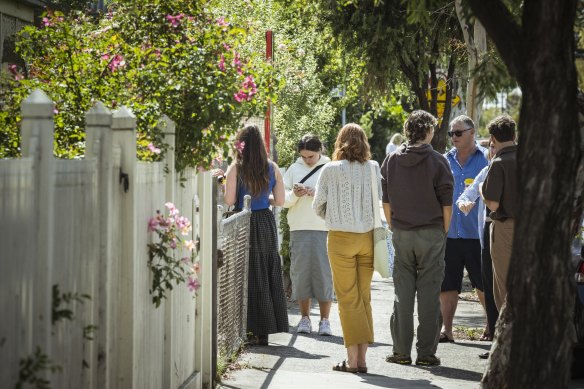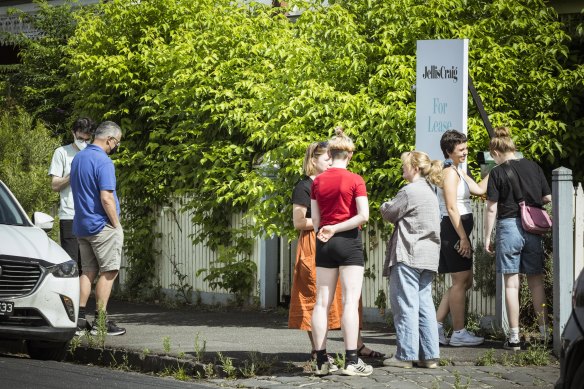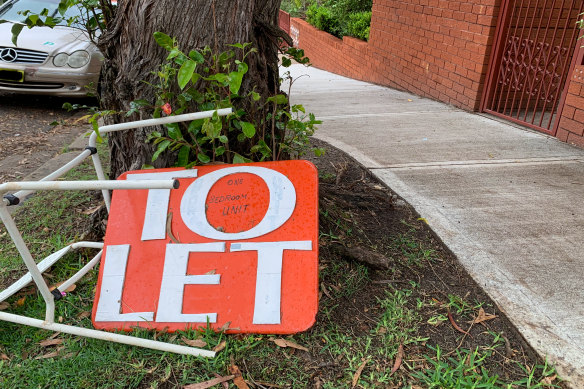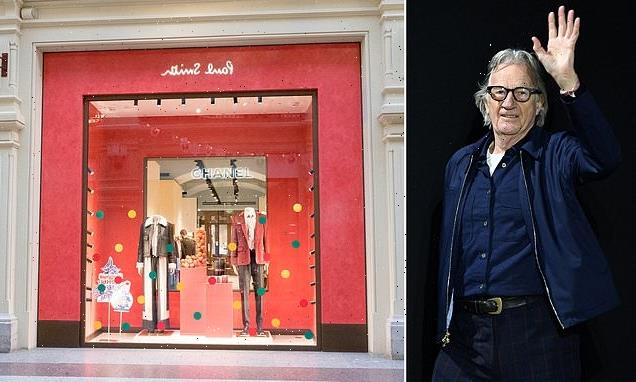Key points
- Record low rental vacancy rates were reached in Sydney, Melbourne, Perth and nationally in January.
- Rents were also at record highs in the December quarter.
- Rising rents are associated with rising homelessness.
Property listings
Australia’s rental vacancy rate has returned to a record low, and experts and advocates warn it will only make life harder for renters.
Just 0.8 per cent of rental properties were available to lease nationally in January, and the level in both Sydney and Melbourne fell to 1 per cent, a record low for Melbourne and an equal record for Sydney.
Long rental inspection queues have become standard as the national vacancy rate drops back to a record low.Credit:Chris Hopkins
Domain chief of research and economics Dr Nicola Powell said the rental market was becoming harder for tenants to navigate.
“After seeing that drop back to a record low, the short-term outlook looks pretty bleak for tenants,” she said. “I was a little bit surprised at how tight it’s become.”
Perth also hit a record low, at 0.3 per cent; Adelaide was at the same level; and Brisbane was at 0.8 per cent.
Hobart’s, Darwin’s and Canberra’s rates all improved modestly over the past 12 months. They stood at 0.5 per cent, 1.3 per cent and 1.5 per cent respectively.
Rents reached record highs across the country over the December quarter, the latest Domain Rent Report showed.
After a seasonal lift in vacancy rates over the busy end-of-year period, the rental market continued to deteriorate as demand skyrocketed, Powell said. The rise in demand was due to people taking up more housing following the pandemic and the return of international migration.
The continuing crisis was leading to homelessness or tenants living in substandard housing, Renters and Housing Union media and communications officer Ellise Bourne said.
“We have members who are having to live in a trailer on someone’s property without any amenities or electricity and having to pay rent to the landowner. There are people living in unregistered rooming houses,” she said. “The lack of supply means people who are vulnerable are going to fall into those cracks.”
Bourne said the tight market exacerbated the power imbalance between tenants and landlords.
“It’s a little bit more complicated than there’s just this many people and not enough houses,” she said. “If it were easier for renters to stay in their houses longer, we wouldn’t have an issue with supply and demand in this housing market.
“There’s a total lack of national regulation for the rental market. It’s not easy for people to stay in their homes. If they do get a rent increase they often self-evict.”
Tenants Union NSW chief executive Leo Patterson Ross said the country was in a permanent rental crisis.
Rental markets are chronically undersupplied and tenants have few protections, experts say.Credit:Chris Hopkins
“When we’re talking about these extremely low vacancy rates, whether it’s 1 per cent or 0.8 per cent, these are all bad numbers to have. They are well below a well-functioning system,” Paterson Ross said.
He said that without more properties to rent and stronger rent regulations and rent control, tenants would suffer.
“There is going to be real pressure on rents, pressure on people’s ability to find a home, a lot of people competing for property,” he said.
“These minor variations are not the main story. The bigger picture is there is a long way back to equilibrium where things are not getting worse.”
Powell said a lack of government action to increase housing supply or improve housing affordability had created the situation.
“We’re back to square one for these markets,” she said. “The tight rental market and rental crisis in many areas of Australia is not something that happened overnight; it was something that has been built over time.”
Patterson Ross said New York was a better model of how renting could be done. It has a suite of renter protections in place once the vacancy rate drops below 5 per cent.
Achieving a 5 per cent vacancy rate in Australia would be next to impossible, he said. He used Sydney as an example to illustrate the difficulty faced by Australian governments.
Tenant advocates called for more renter protections.Credit:Peter Rae
“To achieve that vacancy rate of 5 per cent that would mean not only building what is currently needed but to build enough to supply roughly 50,000 vacant homes that are surplus to our needs.
“It is not credible to think that developers, industry are going to build homes that nobody is going to use. There’s no incentive so that’s why you need to create changes in market structure.”
He said the situation ultimately required that the government take a much more proactive role in recognising renting as an essential service and providing the community with enough safe, affordable and habitable homes in sought-after locations.
Most Viewed in Property
Source: Read Full Article





